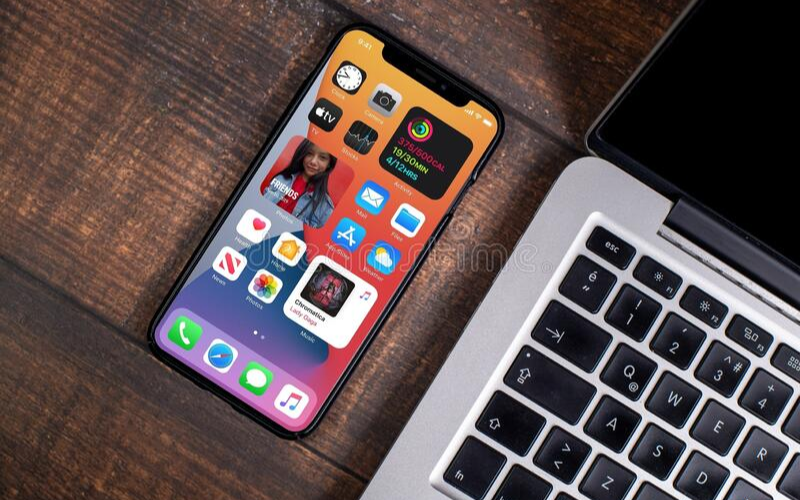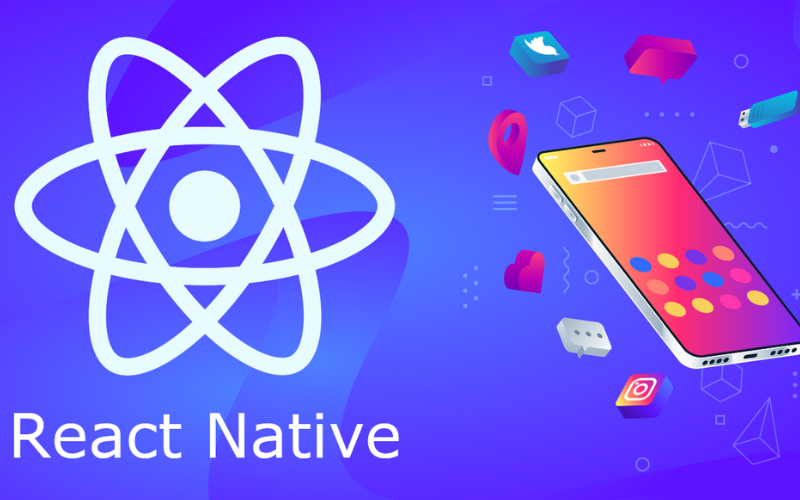One of the largest producers
of mobile devices worldwide is Apple. In the United States, 48.7% of
smartphones are iPhones, and the global revenue generated by the Apple App
Store exceeds $640 billion.
These figures are expected
to remain strong due to the unwavering loyalty of Apple users. To put it
differently, iOS applications are a lucrative industry.
Numerous iOS programming
languages have emerged over time, which means that creating an iOS app no
longer necessitates the exclusive use of native code.
If you are contemplating the
iOS market for your subsequent mobile application, it's worthwhile to assess
your alternatives and determine the most fitting one for your project.

This article will explore
the best languages for iOS app development and their advantages and
disadvantages, enabling you to make the optimal decision.
Top
iOS app development languages
Nearly all online businesses
require mobile applications nowadays. According to the most recent StatCounter
statistics, mobile devices account for up to 58% of online connections,
surpassing both tablets and computers.
Furthermore, the data
reveals that 29% of these mobile connections are made using iOS devices. As a
result, you can be sure that investing in iOS app development is a wise decision.
If you're unsure which
programming language is ideal for this purpose, you've come to the right place.
Swift
Ever since it was launched,
Swift has emerged as one of the most outstanding programming languages for
application development, particularly for iOS, iPadOS, WatchOS, macOS, and
itvOS.
Apple introduced it in 2014
as a substitute for Objective C, and iOS developers have been utilizing Swift
extensively ever since.
As per the PYPL (programming
language popularity) index, Swift is the 8th most favored programming language
globally for app development, holding a market share of approximately 2.03%.
Developing apps using Swift
is significantly more straightforward and secure compared to other languages.
Swift offers exceptional
efficiency for a wide range of tasks. When working on a project, ensuring
security is of utmost importance, and Swift takes care of this by not allowing
"nil" by default and its compiler stops the use of "nil" to
prevent any unwanted crashes in your application.
Primarily, developers employ
Swift for developing apps for Apple devices. Although there are only a few
exceptions, there are hardly any other applications for this language. This
limitation restrains its popularity.
🔘 Related: Swift UI vs. Swift for iOS development
Objective
C
Objective C made its way
into the scene during the 1980s, drawing inspiration from C and Smalltalk.
Apple's iPhone SDK 2.0 was launched in 2008, providing the ability to design
iOS software.
Initially, it functioned as
an extension of C, but Objective C became the official language for all iOS
interfaces following its licensing by NextStep and Apple.
There is an abundance of
resources available to simplify working with Objective C. Although it is
compatible with Swift, it is not as efficient as the latter when it comes to
iOS language programming.
In 2014, the more robust
Swift was introduced, which incorporated the best features of Objective C while
eliminating its drawbacks. Although most iOS developers prefer Swift, Objective
C is still used to maintain older projects.
Objective C is a dated and
somewhat obsolete programming language (Its latest update was in 2016).
It is advisable to use it
only when developing apps for previous iOS devices that do not back Swift. If
you aim to develop apps for present and future iOS devices, it is better to use
Swift instead.
React
Native
When it comes to developing
iOS apps, React Native is the go-to language. This language’s easy-to-grasp
nature has made it one of the best languages for iOS app development and a
preferred choice for aspiring iOS developers.
It is widely used on Meta,
which has a large user base. Moreover, the apps can also be made available on
Android devices.
React Native employs popular
programming languages like JavaScript and Typescript. Developers who are
proficient in these languages can effortlessly switch to React Native.

This language enables the
creation of visually appealing applications for the iOS platform. React Native
is based on the concept of components, making everything reusable in the
language.
Flutter
Google launched Flutter in
2017 with the aim of reducing time and workforce requirements. Flutter is based
on Dart programming language that uses JIT and AOT to minimize time
consumption. Additionally, Flutter allows UI to update without unnecessary
modifications.
Flutter provides instant
reload and fast experience that permits the user to observe all the latest
modifications without forfeiting any pertinent information.
If you are interested in
exploring iOS app building, you may want to study this all-inclusive app
development toolkit, also known as SDK, which was presented by Google in 2015
and released in 2017.
Flutter provides an
extensive variety of pre-built widgets that developers can effortlessly
integrate into any iOS application being developed.
It also allows every user to
implement any intricate feature through personalized UI that can be deployed
across various platforms. It empowers developers to economize their time and
energy.
C#
C# is one of the top iOS app
development languages. It is a flexible and object-oriented programming
language developed by Microsoft. This youthful language is commonly employed
for creating applications that are compatible with multiple platforms, as well
as in the production of games, websites, software, web APIs, and other
applications.
In 2022, professional
developers ranked C# as the seventh most popular programming language. If you
intend to create iOS and Android applications, it is advisable to use C#.
Additionally, if you have C#
developers on your team, this language is an excellent choice.
C# delivers impressive
response times during compilation, making it an ideal option for those who
prioritize execution speed.
Furthermore, C# has an
extensive library of pre-defined functions, which contributes to its faster
performance compared to other languages.
HTML5
HTML5, which is responsible
for approximately 89% of websites, has become a popular choice among small
startups due to its efficiency and affordability. As a novice, you can also
commence with HTML5 to acquire knowledge and construct iOS applications.
As the newest standard for
web page display and interaction, HTML5 was approved in 2014, marking the first
update to HTML in 14 years.
This update was long-awaited
and aimed to simplify compliance with consensus-based standards for web
developers and browser builders, resulting in a more efficient and empowering
interface for desktop and mobile users.
While HTML is one of the
best languages for iOS app development and widely used by developers, it may
not always be the optimal choice as it may not work well with older browsers
and lacks support for building custom apps. As a result, custom design options
may be less flexible and have limited functionality.
Opting for HTML5 is a wise
decision if you aim to expedite the development of an uncomplicated iOS app
that can be utilized without an internet connection.
It is advisable to
contemplate this option if your team comprises skilled HTML5 experts who can
proficiently create such an app.
Python
As one of the best languages
for iOS app development, Python is a flexible and contemporary language that
operates at a high level. Its advantages include the ability to develop
well-structured and easy-to-read code, as well as software solutions with high
performance.
iOS developers can utilize
it for creating applications and web services. Python's syntax is lightweight,
making it easy to learn.
The kernel is highly
convenient, and a comprehensive array of built-in libraries provides access to
a remarkable assortment of useful functions and features.
Python is compatible with
various application development styles, including OOP and functional
programming. One of the most widely used language interpreters is CPython,
which is written in C.
This development environment
is distributed free of charge under a free license and supports the most
popular platforms.
JavaScript
JavaScript is considered one
of the top iOS app development languages across the globe.
Sun Microsystems initially
created Java, a strongly typed object-oriented programming language, which was
later acquired by Oracle.
This language is commonly
used by developers for creating interactive web pages, server-side development,
and mobile applications.
Java has a massive user base
of over 9 million developers, making it the sixth most popular programming
language globally.

If you intend to transfer
your web app to iOS, it is advisable to utilize web technologies in your iOS
application. It is essential to have a team of developers who are proficient in
HTML 5, CSS, and JavaScript as these three elements work in conjunction when
embarking on a new app project.
However, if you opt for
React Native, you will only need JavaScript developers to create a hybrid
application that can be launched on different mobile platforms or as a web app.
Conclusion
As the Apple iPhone
continues to maintain its hold on the smartphone market, the demand for iOS
applications is expected to remain high, making iOS app development an
appealing option for developers.
Whether you're a novice or a
seasoned iOS developer seeking a fresh challenge, a variety of best languages
for iOS app development in 2023. Your selection will likely depend on your
current abilities and personal aspirations.
If you have no particular
preference, Swift is a safe bet since it's the default language for iOS
development and is highly favored by Apple. However, this isn't to say that you
can't choose one of the other top iOS app development languages.
If you need any help with
your iOS app development project, feel free to contact us.